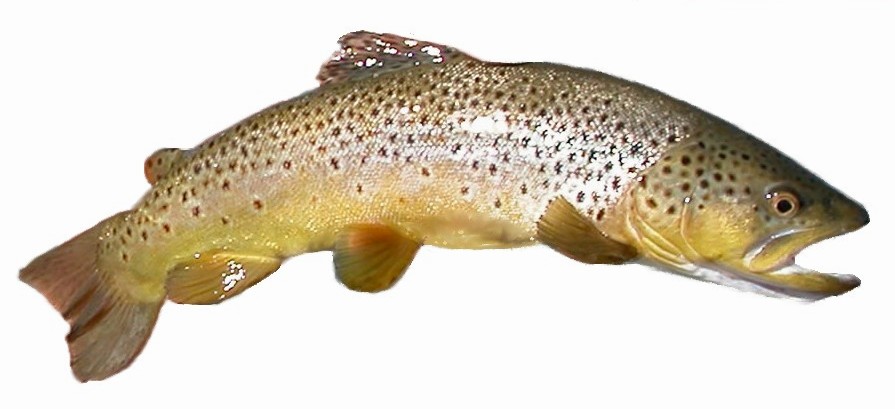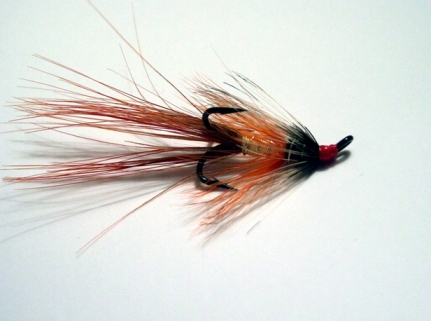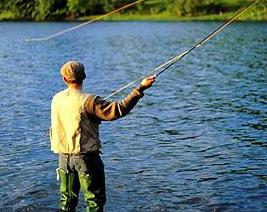Guestbook
We'd like to hear your views on Moyola Angling Club.
Please Sign Our Guestbook to leave your comments in our guestbook about any club maters. This guestbook is moderated.
Page 47 of 68
Name: willy darragh
6/10/2009
i was reading the home page on the topic of banned baits i was wondering does anyone know if the garden pea is included ive often heard some of the old hands talking about the garden something or other so i assumed it must be the pea does it fish better on the float or on the bottom ? lol
Name: Jack Chapman
4/10/2009
The following are the salmon fish counts reported by the Loughs Agency -
Fish counts:
Corrick 1291 Count to 24th Sep 2009
Roe 1797 Count to 24th Sep 2009
Faughan 594 Count to 24th Sep 2009
Sion Mills 7,437 Count to 24th Sep 2009
Finn 2,098 Count to 05th Sep 2009
Culdaff Not yet operational
Strule 168 Count to 04th Sep 2009
Clanrye 99 Count to 16th Sep 2009
Fish counts:
Corrick 1291 Count to 24th Sep 2009
Roe 1797 Count to 24th Sep 2009
Faughan 594 Count to 24th Sep 2009
Sion Mills 7,437 Count to 24th Sep 2009
Finn 2,098 Count to 05th Sep 2009
Culdaff Not yet operational
Strule 168 Count to 04th Sep 2009
Clanrye 99 Count to 16th Sep 2009
Name: willy darragh
4/10/2009
Moyola (Maigh Fhoghlach) (river) Derry. ‘Plain of plundering’. The original name of the river was Bior, ‘water’. Later, it was known as Abhainn na Scríne, ‘river of Ballynascreen’, the parish name meaning ‘townland of the shrine’.
just another copy and paste moment !
just another copy and paste moment !
Name: willy darragh
3/10/2009
i came across an intresting web site (free lough neagh) check it out
Name: patsy h
2/10/2009
I have been thinking a lot about that very awkward question of SeamyD’s about dollaghan strains and interbreeding, no answer yet (in early development, lol) but this has made me think a lot about the definition and identification of dollaghan and the amount of strains of trout that could possibly exist in the Moyola.
Definition:
The definition of dollaghan I think is a fairly accepted as: dollaghan are basically a strain or possibly one of several strains of brown trout which spend a consideration part of their life and growth in Lough Neagh before migrating up the feeder rivers to breed. (Let me know if I am wrong).
Dollaghan Identification:?
The identification is a different matter. I would like to hear from fellow anglers how, with the naked eye only, that say a ¾-1 ¼ lb wild Moyola caught trout can be 100% identified as a dollaghan (as opposed to a permanent river trout, or an occasional sea trout , or a lower Bann trout, or a slob trout- Is it at all possible that a percentage of dollaghan recorded by anglers are some of these fish?). I have never been convinced about the “no red spots” = “definitely dollaghan” theory but would be interested to hear other views.
How many Strains? “A minefield?”
Then consider a 2-10 lb Moyola trout – this raises many questions to me about strains and genetics of Moyola trout. E.g. Are there such things as the dollaghan equivalent of grilse (one season in the lough before spawning) or the dollaghan equivalent of multi sea winter salmon (several seasons in the lough before spawning for the first time), as well as the trout that are multi season spawners? Then I think -are there strains of trout in the lough which through genetics feed primarily on fish fry and others that feed primarily on insects/snails due to habitat/genetics? Maybe this explains some of the apparent variations in growth rate and colour.
Then consider the little trout away up in the mountain feeder streams slow growing, dark in colour, the ones that you could never grow to a pound even if you force fed them.
Then consider the visible variation to anglers in brown trout caught in the l main river, pink flesh v white flesh, big differences in colours and spots.
I have heard the theory that the colour of a wild trout’s flesh is determined by its diet but I suggest that its diet could be determined by its habitat and the habitat by genetics i.e. colour of flesh influenced by strain in the wild?.
I have also heard some anglers saying that the external colour/spots of a trout are determined by its habitat almost as if the trout can magically change its colour if migrated to a new habitat. Not sure here, I think it’s possibly the other way round, only trout of a particular colour/spots determined by its strain have a good survival chance in a particular habitat? i.e. coloration determined by strain? But even this is complicated as the external colour/spots of trout may possibly be affected by change in diet. All very confusing for later debate ;).
But the main point is that this all makes me think “how many strains of trout could possibly exist in the Moyola? Personally I believe that there could be dozens if not hundreds of strains!
I now realize how little I know about trout in the Moyola. Including: When do trout migrate to the lough? At what age? Does a percentage of fry of resident river trout migrate to the lough? Does a percentage of dollaghan fry stay in the river as permanent river trout,? What affect has roach had on the dollaghan since their relatively recent introduction? Do the majority of dollaghan return to the river of their birth like salmon or do they hap-hazardly migrate up and breed in other rivers? Etc.
I would like to meet the person who knows all these answers!
To be continued ;)
Definition:
The definition of dollaghan I think is a fairly accepted as: dollaghan are basically a strain or possibly one of several strains of brown trout which spend a consideration part of their life and growth in Lough Neagh before migrating up the feeder rivers to breed. (Let me know if I am wrong).
Dollaghan Identification:?
The identification is a different matter. I would like to hear from fellow anglers how, with the naked eye only, that say a ¾-1 ¼ lb wild Moyola caught trout can be 100% identified as a dollaghan (as opposed to a permanent river trout, or an occasional sea trout , or a lower Bann trout, or a slob trout- Is it at all possible that a percentage of dollaghan recorded by anglers are some of these fish?). I have never been convinced about the “no red spots” = “definitely dollaghan” theory but would be interested to hear other views.
How many Strains? “A minefield?”
Then consider a 2-10 lb Moyola trout – this raises many questions to me about strains and genetics of Moyola trout. E.g. Are there such things as the dollaghan equivalent of grilse (one season in the lough before spawning) or the dollaghan equivalent of multi sea winter salmon (several seasons in the lough before spawning for the first time), as well as the trout that are multi season spawners? Then I think -are there strains of trout in the lough which through genetics feed primarily on fish fry and others that feed primarily on insects/snails due to habitat/genetics? Maybe this explains some of the apparent variations in growth rate and colour.
Then consider the little trout away up in the mountain feeder streams slow growing, dark in colour, the ones that you could never grow to a pound even if you force fed them.
Then consider the visible variation to anglers in brown trout caught in the l main river, pink flesh v white flesh, big differences in colours and spots.
I have heard the theory that the colour of a wild trout’s flesh is determined by its diet but I suggest that its diet could be determined by its habitat and the habitat by genetics i.e. colour of flesh influenced by strain in the wild?.
I have also heard some anglers saying that the external colour/spots of a trout are determined by its habitat almost as if the trout can magically change its colour if migrated to a new habitat. Not sure here, I think it’s possibly the other way round, only trout of a particular colour/spots determined by its strain have a good survival chance in a particular habitat? i.e. coloration determined by strain? But even this is complicated as the external colour/spots of trout may possibly be affected by change in diet. All very confusing for later debate ;).
But the main point is that this all makes me think “how many strains of trout could possibly exist in the Moyola? Personally I believe that there could be dozens if not hundreds of strains!
I now realize how little I know about trout in the Moyola. Including: When do trout migrate to the lough? At what age? Does a percentage of fry of resident river trout migrate to the lough? Does a percentage of dollaghan fry stay in the river as permanent river trout,? What affect has roach had on the dollaghan since their relatively recent introduction? Do the majority of dollaghan return to the river of their birth like salmon or do they hap-hazardly migrate up and breed in other rivers? Etc.
I would like to meet the person who knows all these answers!
To be continued ;)
Name: Philip Maguire
2/10/2009
Its hard to say anything on this guest book now with all the big words that are being used.
Im just letting everyone no that next saturday is open day and there is a competition this saturday,
So we need a big push on Sunday to do the last we bit of tidying around the Ponds.
We will look forward to seing a good turn out on sunday.
Im just letting everyone no that next saturday is open day and there is a competition this saturday,
So we need a big push on Sunday to do the last we bit of tidying around the Ponds.
We will look forward to seing a good turn out on sunday.
Kuriake, meaning "Lord's", later became the Greek word for Sunday.
Name: patsy h
2/10/2009
some of my best annual fishing now starts -pollock and roach. Unfortunately the game fishing for me is poorer than normal.
Name: Patsy
2/10/2009
Willie, hate to tell you this but....
anadromous and catadromous are sub groups of diadromous fish so strictly speaking SeamyD was right but I think that was good fortune on his behalf. Your only defence now is ...take the teacher is always right role. ;-)
anadromous and catadromous are sub groups of diadromous fish so strictly speaking SeamyD was right but I think that was good fortune on his behalf. Your only defence now is ...take the teacher is always right role. ;-)
Patsy
i knew that all along, i just hadn't the heart to tell Willie.
its well seen we're not catching any fish when this is all we have to debate!!!
i knew that all along, i just hadn't the heart to tell Willie.
its well seen we're not catching any fish when this is all we have to debate!!!
Name: willy darragh
1/10/2009
Most river fly patterns are imitative and fortunately many of them represent a number of species of insects and so the angler does not require knowledge of the finer details of entomology. Hares ear, pheasant tail, prince nymph, Czech nymphs, peeping caddis, killer bug and woven nymphs are very successful. Gold head and tungsten-weighted versions are particularly effective for getting deep quickly. These patterns are usually fished with a short line "high stick" style or in conjunction with indicators. Traditional wet flies are normally fished in teams of two or three flies, chosen to represent the variety of insects that may be available to the trout. This method is best early in the season and Greenwell (winged), March Brown, Silver March Brown, Black and Blae, Snipe and Purple, Blue Dun, Malloch's Favourite, Wickham´s Fancy and Greenwell spider are form the basis of most casts. Wet flies are most often fished "on the swing" but upstream wet fly fishing is a more skill and deadly presentation. In recent years Cul-de-Canard dry flies have proven their effectiveness, especially as emerger and dry patterns. A selection of these representing upwing and caddis insects is very useful throughout the season. Recommended conventional winged or hackled dry flies include Greenwells, Dark, Medium and Light Olives, March Brown, Yellow May Dun, Tups Indispensable, Red Quill, Ginger Quill, Adams, Elk or Deer Hair Caddis and Blue Winged Olive. For those occasions when nothing is rising, terrestrial patterns such as ants and small hoppers are useful for prospecting.
regards willy
regards willy
Name: patsy h
1/10/2009
Seamus,
nice to see you are looking forward to the mullet and flounder run . The mullet especially are excellent fighters, so please do keep a lookout and let us all know immediately when they arrive. I'm getting my mullet gear ready now, thanking you in anticipation, patsy :-)
nice to see you are looking forward to the mullet and flounder run . The mullet especially are excellent fighters, so please do keep a lookout and let us all know immediately when they arrive. I'm getting my mullet gear ready now, thanking you in anticipation, patsy :-)
Name: willy darragh
1/10/2009
i havent been to uni but ive just been taught how to use copy and paste watch this space! more to follow lol.
Name: Barry Gallagher
1/10/2009
Its good to see the guest book been used,
But come on willie have you been to Oxford or something to learn all these big words?
Have you become a Dr or a Pro please do tell
But come on willie have you been to Oxford or something to learn all these big words?
Have you become a Dr or a Pro please do tell
Name: willy darragh
1/10/2009
tut tut seamus you havent bee paying attention in class their not diadromous but anadromous see me after school lol
Name: Patsy h
1/10/2009
And Seamus, they will meet the catadromous fish on route to the sargasso sea .
Name: Mick O Kane
1/10/2009
if we were as good at catching the things as we are at getting all these names for them we would be going well!







